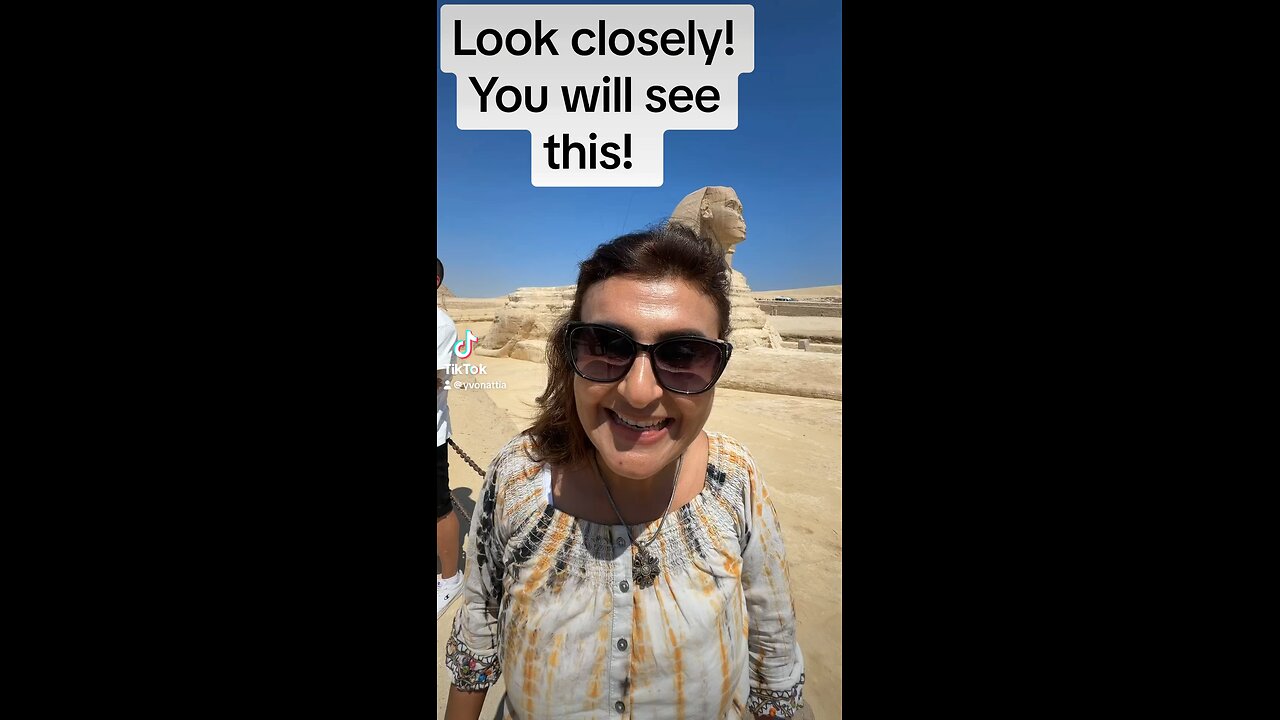Premium Only Content

Look Closely! Can you see this!
Celebrate Freedom Ministries is a powerful ministry with the purpose of equipping the saints to walk in the supernatural power and love of God. Celebrate Freedom Ministries specializes in the full gospel of the Kingdom, training leaders on how to train others in healing and deliverance. Celebrate Freedom Ministries has been ministering in the Middle East via Christian Arabic channels that reach Millions of unbelievers for Jesus.
To connect with us, visit
Celebrate Freedom Ministries, https://www.celebratefreedomministries.org
Go to subscribe to our Youtube channel
https://youtube.com/c/YvonAttia?sub_confirmation=1
Thank you for making the Celebrate Freedom Ministries possible!
Click here to learn how to partner with us
https://www.celebratefreedomministries.org/partners
To get Pastor Yvon's new book Revealing the Healer, visit
https://www.celebratefreedomministries.org/books
#YvonAttia #MinaAttia #Itssupernatural #prophecies #resurrection #miracles #sidroth #yeshua #healing #deliverance
To enroll in Celebrate Freedom's online inner healing course, visit
https://www.celebratefreedomministries.org/healing-school
To Join Celebrate Freedom's discipleship class, or send in a prayer request or testimonial, send an email to info@celebratefreedomministries.org
Prefer to send a gift by mail? Make your check to
Celebrate Freedom Ministries
1661 West Avenue, #313
Miami Beach 33139
FL, USA
The Great Sphinx of Giza is a limestone statue of a reclining sphinx, a mythical creature with the head of a human and the body of a lion.[1] Facing directly from west to east, it stands on the Giza Plateau on the west bank of the Nile in Giza, Egypt. The face of the Sphinx appears to represent the pharaoh Khafre.[2] The original shape of the Sphinx was cut from bedrock, and has since been restored with layers of limestone blocks.[3] It measures 73 m (240 ft) long from paw to tail, 20 m (66 ft) high from the base to the top of the head and 19 m (62 ft) wide at its rear haunches.[4]
The Sphinx is the oldest known monumental sculpture in Egypt and one of the most recognizable statues in the world. The archaeological evidence suggests that it was created by ancient Egyptians of the Old Kingdom during the reign of Khafre (c. 2558–2532 BC).
The circumstances surrounding the Sphinx's nose being broken off are uncertain, but close inspection suggests a deliberate act using rods or chisels.[8] Contrary to a popular myth, it was not broken off by cannonfire from Napoleon's troops during his 1798 Egyptian campaign. Its absence is in fact depicted in artwork predating Napoleon and referred to in descriptions by the 15th-century historian al-Maqrīzī.
Why was the Sphinx built?
The exact purpose of the Egyptian Sphinx, specifically the Great Sphinx of Giza, remains a subject of scholarly debate, and there is no definitive answer. However, several theories have been proposed:
Guardian of the Pyramids: One theory suggests that the Sphinx was built as a guardian or protector of the nearby pyramids, particularly the Pyramid of Khafre.
The Sphinx’s imposing presence may have been intended to ward off evil spirits or serve as a symbol of royal power and authority.
Symbol of the Sun God: Some theories propose that the Sphinx represents the sun god Ra or the sun itself. The Sphinx faces the sunrise, and its association with solar symbolism could link it to the cycles of the sun and the afterlife.
Pharaoh’s Portrait: Another prevalent theory is that the Sphinx is a monumental portrait of a specific pharaoh, often identified as Khafre.
This interpretation suggests that the Sphinx served a commemorative or political purpose, immortalizing the ruler in a divine and powerful form.
Alignment with Constellations: There are hypotheses suggesting that the Sphinx may be aligned with certain constellations or served as an astronomical marker.
Some argue that its orientation is linked to celestial events or ancient Egyptian religious beliefs.
Water Erosion Hypothesis: Some researchers propose that the erosion patterns on the Sphinx’s body indicate water erosion, leading to speculation that it may have been constructed during a period when the region experienced more rainfall. This theory, however, is not universally accepted.
-
 LIVE
LIVE
SpartakusLIVE
5 hours agoDuos w/ GloryJean on VERDANSK || #1 Most EATING Streamer
1,032 watching -
 LIVE
LIVE
Spartan (Pro Halo esports Player)
7 hours agoSdcrims no comms, then College match
153 watching -
 34:43
34:43
Stephen Gardner
4 hours ago🚨Trump Lawyer makes TWO HUGE ANNOUNCEMENTS | Benny Johnson
40.8K31 -
 UPCOMING
UPCOMING
The Sufari Hub
11 minutes ago🔴Elder Scrolls IV Remastered - WE WILL TAKEOVER OBLIVION - 155/200 Hours!
-
 2:17:31
2:17:31
Robert Gouveia
5 hours agoJudge BLOCKS Proof-of-Citizenship! Trump BACK to Supreme Court! Deportee Discovery STAYED!
48.3K22 -
 LIVE
LIVE
MyronGainesX
19 hours ago $13.53 earnedCollege Debate Reaction, Jordan Peterson Sells Out, Shannon Sharpe Shakedown!
2,363 watching -

Joker Effect
2 hours agoWE ARE IN THE WILDWEST! Frontier Legends is crazy!
1.17K -
 LIVE
LIVE
FrizzleMcDizzle
3 hours agoELDEN RING and I'm officially a creator on RUMBLE
90 watching -
 1:33:35
1:33:35
theoriginalmarkz
4 hours agoEvening News with MarkZ, joined by Jonathan Otto. 04/24/2025
56.4K5 -
 LIVE
LIVE
Lilpaul112
5 hours agoSolos On the Island / Repo Time With the Brrrap Pack Gang!
78 watching